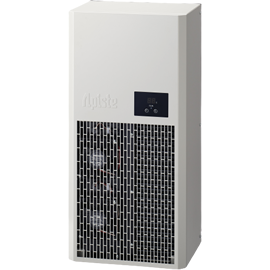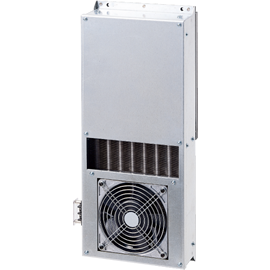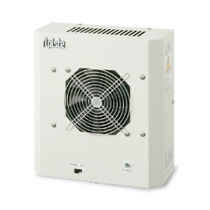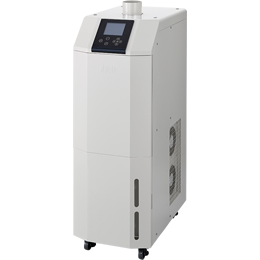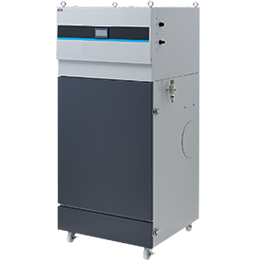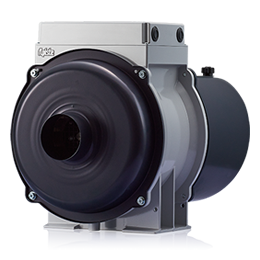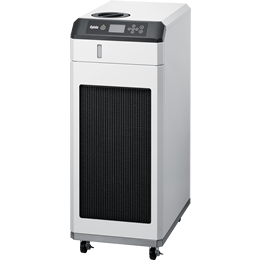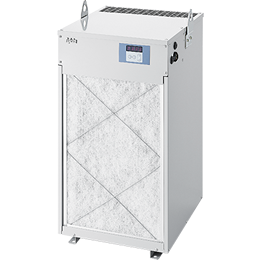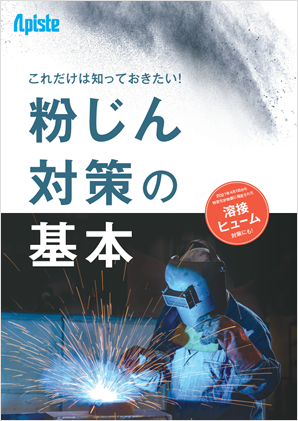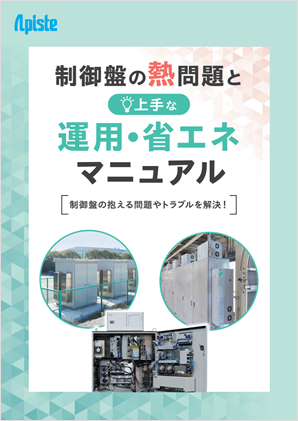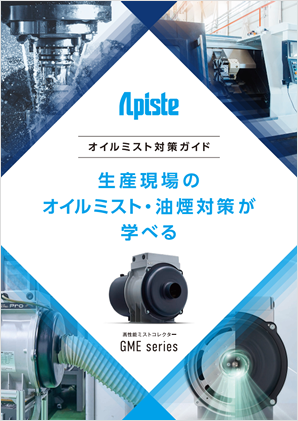Technical Information
1-3. How to manage dusty work
Special training for dusty work
When dust from earth, rocks, minerals, etc. is inhaled over a long period of time, the dust accumulates in the lungs, causing health problems such as shortness of breath and palpitations, and may eventually lead to a disease called pneumoconiosis. Pneumoconiosis progresses over a long period of time.
To prevent pneumoconiosis, laws and regulations require employers to take various preventive measures and manage their health. However, in order to take these measures, each worker must recognize their importance, acquire the necessary knowledge, and actively work towards them.
If an employer has workers constantly work in environment where there is a risk of exposure to dust (specific dust work), the employer is required to provide special training to the workers.
*Specific dusty work: Work involving dust in locations where the source of dust is specified in Appendix 2 of the Dust Hazard Prevention Regulations.
| Dust-related Hazard Prevention Regulations Article 22 Special Education |
|
|---|
inspections of various facilities such as exhaust and ventilation systems
"Local exhaust equipment", "push-pull ventilation system", and "dust removal device" are required to conduct regular self-inspections once every year within one year in accordance with the provisions of the Labor safety Health Act.
In addition, the Ministry of Health, Labour and Welfare has notified us of the guidelines for regular self-inspections. Here are some points about inspections.
① Hood inspections
When inspections a hood, a smoke test is performed to check the intake airflow. A smoke test involves generating white smoke using a smoke tester and checking how the white smoke is flowing into the hood. If the white smoke is not being drawn in properly, check the following:
Points to check
- Is the hood damaged or blocked by dust accumulation?
- Are there any obstacles near the hood that could hinder the airflow?
- Is the hood too far from the dust source?
- Is the airflow changing due to outside air entering through a window, etc., causing turbulence around the hood?
- Do the size and orientation of the hood match the speed and direction of the dust dispersion?
② Duct inspections
Check the following points by visually inspecting the duct from the outside.
Points to check
- Are there any areas of duct damage such as wear or corrosion?
- Are there any loose or damaged duct connections?
- Tap the duct lightly to see if there is any dust buildup inside. (If there is dust buildup, you will hear a dull sound.)
③ inspections of dust removal equipment
The dust removal equipment will be described as a filtration dust removal system. Please check the following:
Points to check
- Check that the filter media is not damaged and that the attachment is not loose or detached.
- Is the dust box full of dust?
- Is the filter material clogging?
④ Other inspections
In addition, for equipment that seals off dust sources, thoroughly inspections to make sure there are no dust leaks. The main areas inspections are joints, joints, and the covers of material inlets and product outlets.
In addition, if dust control measures are being taken using water sprinkler systems, it is important to supply the dust source with the amount of water required to prevent dispersion at the appropriate pressure. It is necessary to check during daily inspections whether the dust source can be kept moist.
Measuring and understanding dust concentration
The Dust Hazard Prevention Regulations stipulate that indoor workplaces where specific dusty work is constantly performed must regularly measure the dust concentration in the air once every six months. Dust concentration varies depending on the location, time, type of work, and amount of work even within the workplace, but by measuring the concentration regularly using a set method, it is possible to understand the state of the work environment and use this information to manage worker health and take dust control measures.
The methods for work environment measurements are stipulated in the Work environment Measurement Standards. Furthermore, practitioners who carry out work environment measurements must either employ a work environment measurement expert registered with the Minister of Health, Labour and Welfare, or outsource the measurements to a work environment measurement organization registered with the Minister of Health, Labour and Welfare or the Director of the Prefectural Labour Bureau.
Daily tidying and cleaning
In indoor workplaces, care must be taken to prevent secondary dust emissions due to accumulated dust not only in workplaces where dusty work is performed, but also in areas where rest facilities are provided.
Article 24 of the Dust Hazard Prevention Regulations states that indoor work areas where dusty work is performed must be cleaned at least once a day. In addition, accumulated dust that cannot be removed by daily cleaning must be removed regularly, at least once a month, by vacuum cleaner or washing with water.
However, if the workplace is cluttered and items are placed haphazardly in various places, dust will easily accumulate in gaps and other areas, making cleaning difficult. First, you should devise a layout for the workplace, including storage, to create environment that is easy to keep tidy. If the workplace is normally kept tidy, cleaning will be easier and dust control measures will become more thorough.
In addition, dust tends to leak from the work area and accumulate in the passageways and entrances to the dusty work area. It is necessary to prevent dust from scattering in the passageways by installing an anteroom at the entrance and changing the layout of passageways used by workers other than dust workers so that they avoid the dusty work area, and to constantly clean up and remove scattered dust.
When workers are engaged in dusty work, rest facilities must be provided in a location other than the workplace where the dusty work is performed. It is necessary to minimize exposure to dust during breaks. Regarding management, regular cleaning is required, just like in dusty workplaces. It is also important to make it a habit not to bring dust into the rest facilities by providing items such as clothing brushes and shoe wiping mats so that dust adhering to work clothes can be removed before using the rest facilities.
Previous item: 1-2. Dust suppression methods
Next item: 1-4. Laws and regulations regarding dust
People who viewed this page also checked out these documents:
Inquiry
For product inquiries, quote requests, etc.
Please feel free to contact us.


